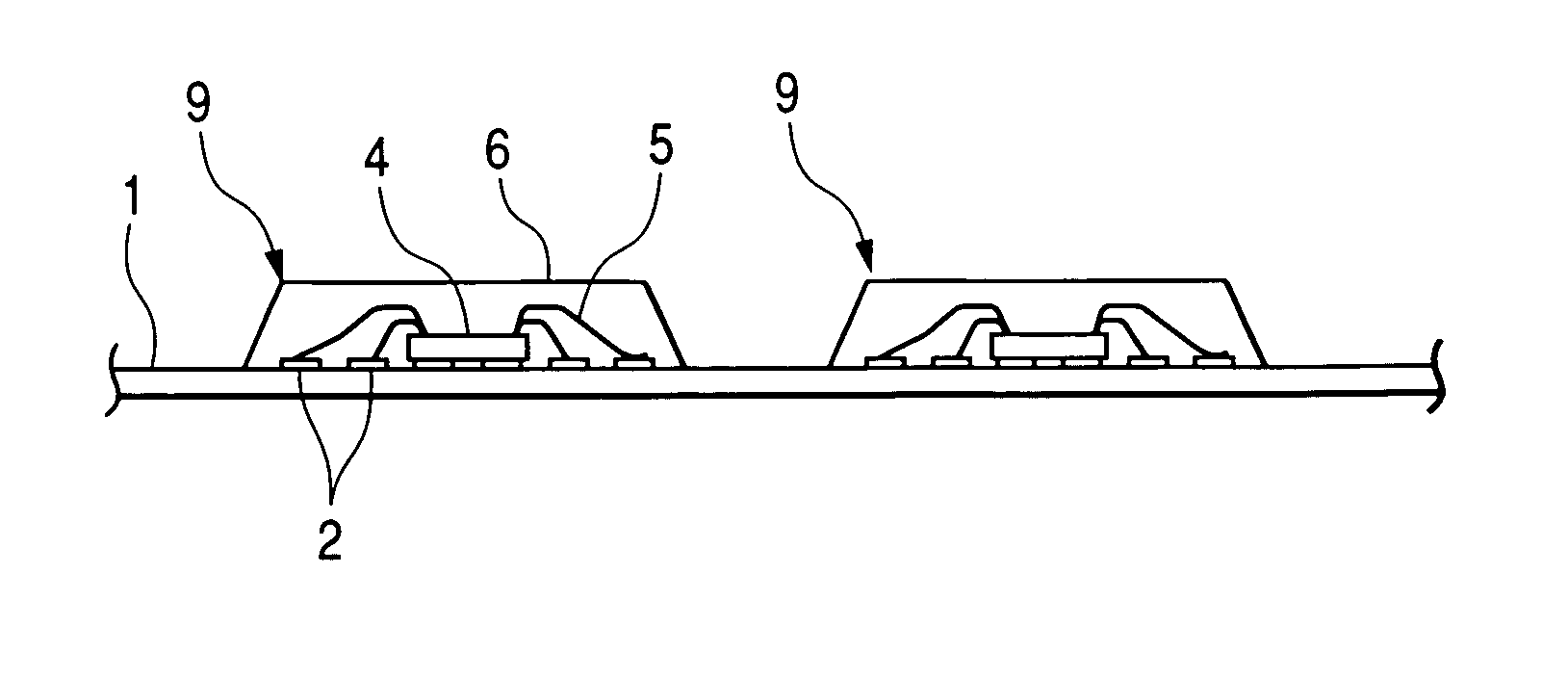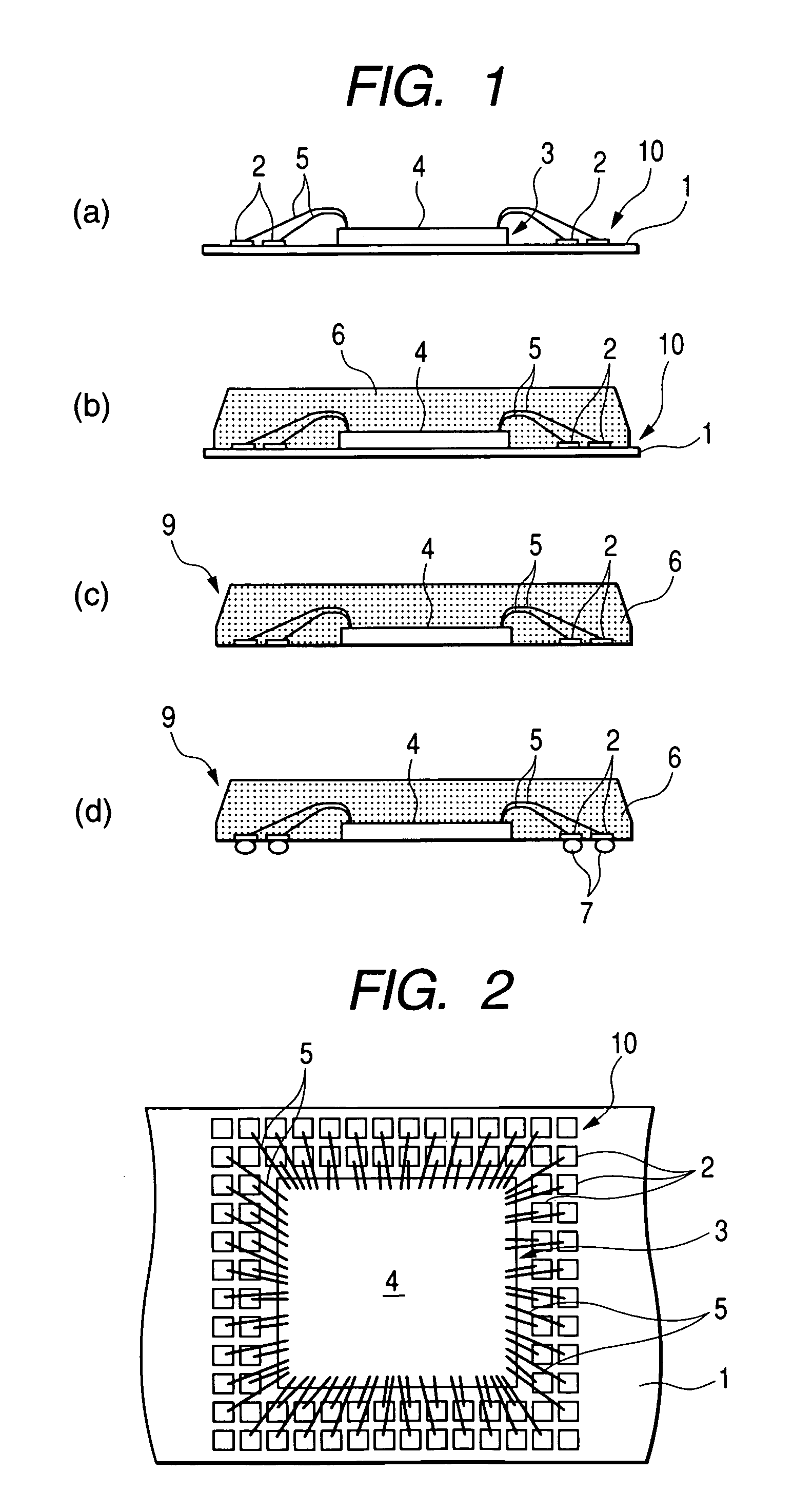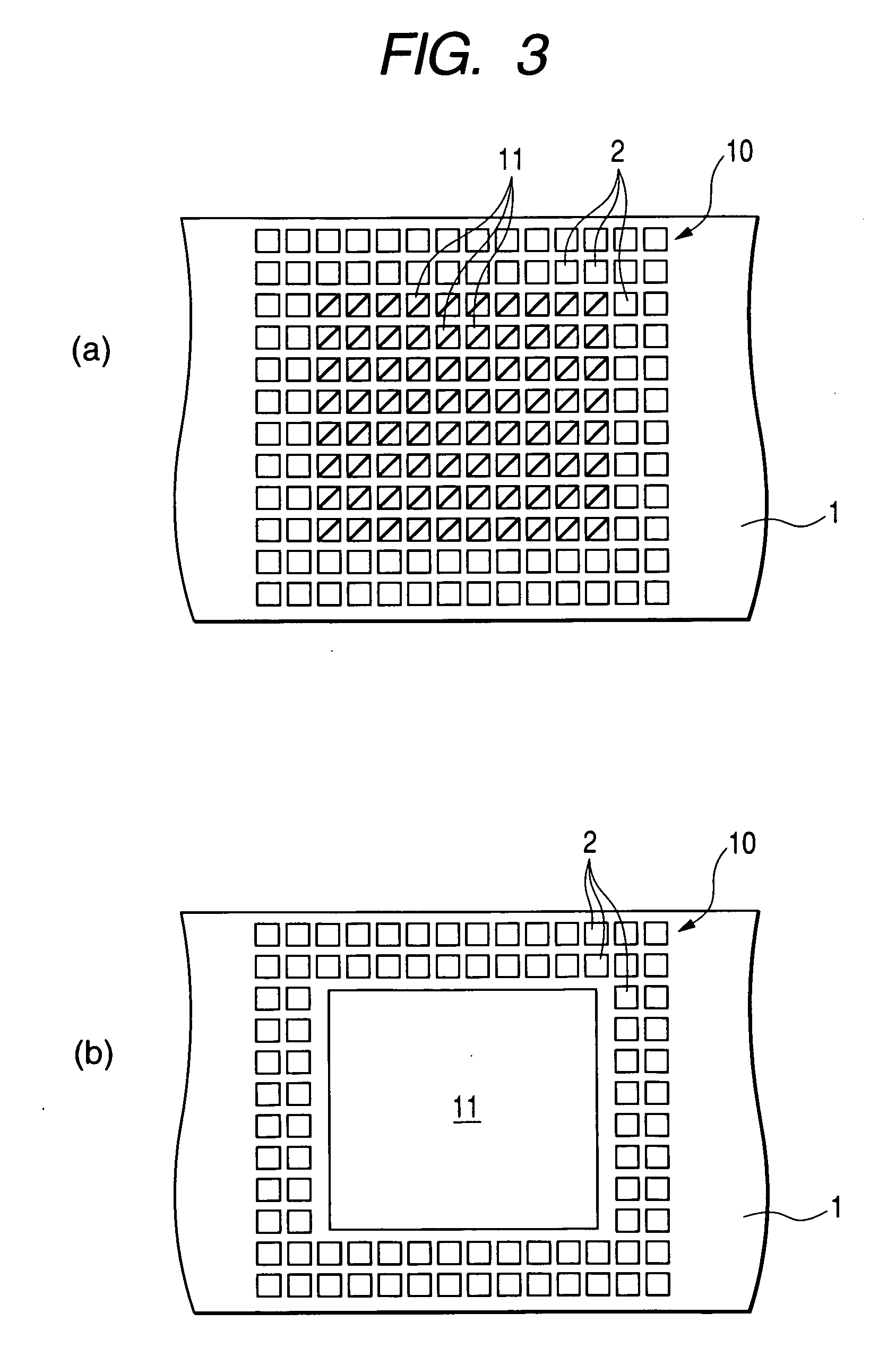Semiconductor device and its manufacturing method
a semiconductor device and manufacturing method technology, applied in semiconductor devices, semiconductor/solid-state device details, electrical equipment, etc., can solve the problems of increasing the number of external terminals, and increasing the package size, so as to reduce the thickness of the semiconductor device, reduce the size of the sealing member, and reduce the size
- Summary
- Abstract
- Description
- Claims
- Application Information
AI Technical Summary
Benefits of technology
Problems solved by technology
Method used
Image
Examples
first embodiment
[0093] FIGS. 1 to 6 illustrate a method of manufacturing a non-leaded, resin-sealed type semiconductor device according to an embodiment (first embodiment) of the present invention. In this first embodiment, such a semiconductor device as shown in FIG. 1(d) is fabricated through such steps as shown in FIGS. 1(a) to 1(d).
[0094] First, as shown in FIG. 1(a), a flexible tape 1 is provided. Plural terminals 2 are arranged peelably in a predetermined area, i.e., a product forming portion 10, on a main surface of the tape 1. The product forming area 10 is an area in which a semiconductor device is formed and which is quadrangular in shape not only in this embodiment but also in subsequent embodiments.
[0095] As shown in FIG. 2, the terminals 2 are arranged in the shape of a quadrangular frame and are arranged at equal intervals in two rows along the four sides of the quadrangle. A quadrangular tape surface located inside the frame serves as a semiconductor element fixing portion 3 for fi...
second embodiment
[0127] FIGS. 7 to 24 illustrate a semiconductor device and a method of manufacturing the same according to another embodiment (second embodiment) of the present invention, of which FIGS. 7 to 9 are related to the semiconductor device, FIG. 10 is a flowchart showing the semiconductor device manufacturing method, and FIGS. 11 to 24 are related to the semiconductor device manufacturing method.
[0128] According to this second embodiment, as a tape corresponding to the tape used in the semiconductor device manufacturing method of the first embodiment there is used a tape with product forming portions arranged in a matrix form of plural rows. A plating film (auxiliary metal layer) is formed on back surfaces of a semiconductor element fixing portion and terminals which back surfaces are exposed to a back surface of an insulating resin layer, to make the terminals into salient electrodes.
[0129] The tape used in this second embodiment, which tape is indicated at 1a, comprises a frame portio...
example 1
Tape Fabrication Example 1
[0139] The method shown in FIGS. 13(a) to 13(f) is a method of forming terminals by utilizing an electroless plating method. As shown in FIG. 13(a), after the tape 1a is provided, a metal foil 2a is bonded to a main surface of the tape 1a through an adhesive (first adhesive) 26. For example, copper foil is used as the metal foil 2a.
[0140] Next, as shown in FIG. 13(b), the tape 1a with the metal foil 2a affixed thereto is sandwiched in between a lower die 27a and an upper die 27b of a press and the metal foil 2a is compression-bonded to the tape 1a by thermocompression bonding.
[0141] Then, as shown in FIG. 13(c), a photoresist film 28 is formed on the metal foil 2a selectively by a conventional photolithography technique. More specifically, the photoresist film 28 is not formed in the region where the terminals 2 and the semiconductor element fixing piece 11 are to be formed, but is formed in the other region.
[0142] Next, as shown in FIG. 13(d), with the ...
PUM
 Login to View More
Login to View More Abstract
Description
Claims
Application Information
 Login to View More
Login to View More - R&D
- Intellectual Property
- Life Sciences
- Materials
- Tech Scout
- Unparalleled Data Quality
- Higher Quality Content
- 60% Fewer Hallucinations
Browse by: Latest US Patents, China's latest patents, Technical Efficacy Thesaurus, Application Domain, Technology Topic, Popular Technical Reports.
© 2025 PatSnap. All rights reserved.Legal|Privacy policy|Modern Slavery Act Transparency Statement|Sitemap|About US| Contact US: help@patsnap.com



